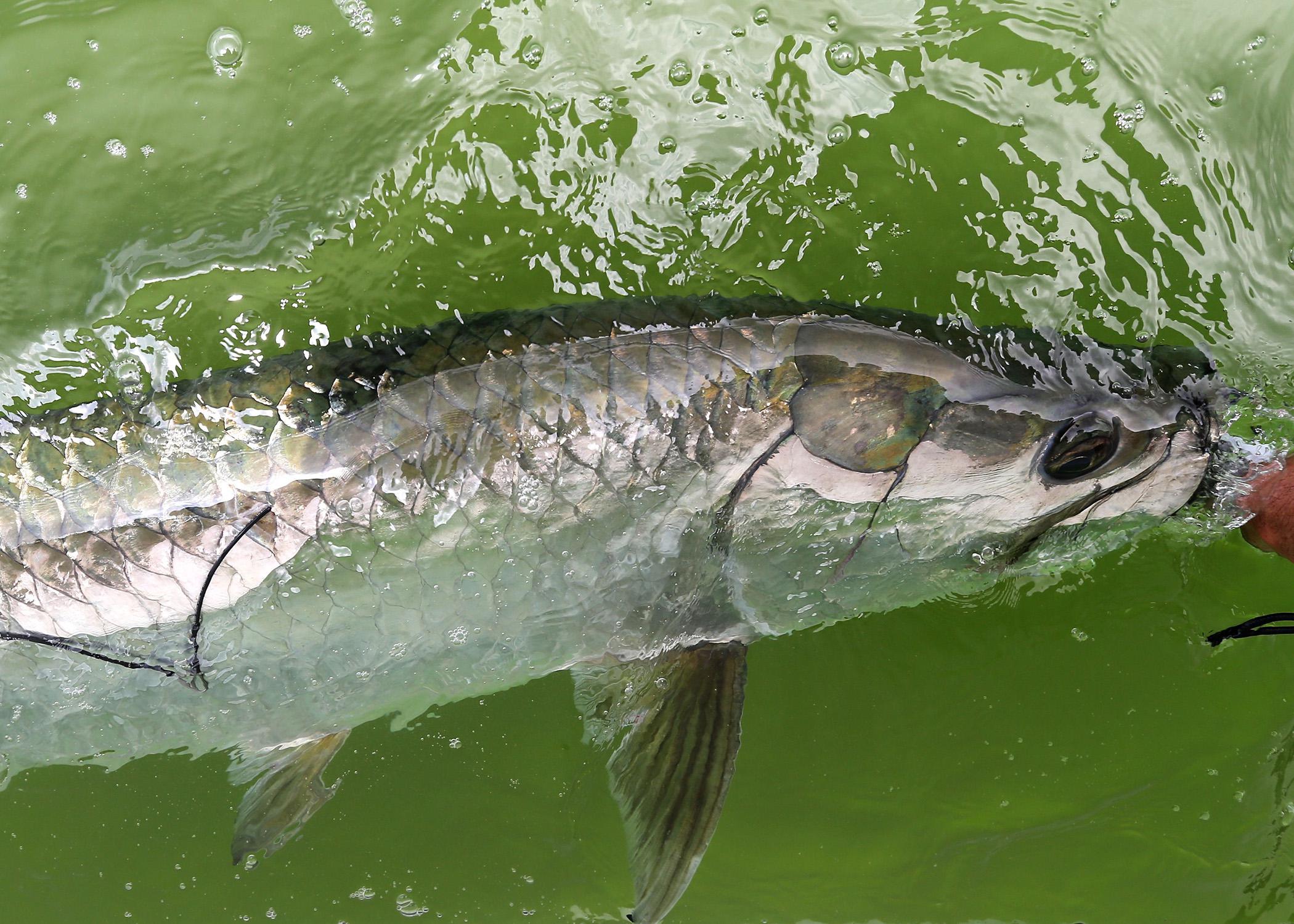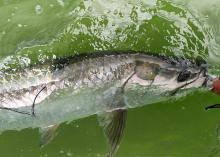Information Possibly Outdated
The information presented on this page was originally released on December 19, 2019. It may not be outdated, but please search our site for more current information. If you plan to quote or reference this information in a publication, please check with the Extension specialist or author before proceeding.
Tracking the silver kings of the northern Gulf
BILOXI, Miss. -- When most people think about tarpon, they probably picture a giant, shimmering, 6-foot fish leaping up towards the sky from the crystal-clear waters of southern Florida. What many people don’t know is that tarpon are also found just off our beaches in the northern Gulf of Mexico.
Although tarpon are not considered table fare in the United States, they are prized by recreational anglers because of their large size and acrobatic behavior. Tarpon generally swim in schools and make long coastal migrations from the southern Gulf of Mexico to the north in the late spring before migrating back south in the fall.
Unfortunately, tarpon populations experienced sharp declines in the mid-20th century due to a combination of overfishing and habitat loss. This decline is particularly evident in the northern Gulf of Mexico, an area once known as the “tarpon capital of the world.” While most Gulf states have implemented harvest regulations to help tarpon populations rebound, managing this species is difficult because little is known about its movement patterns.
To address this lack of knowledge, a team of scientists from Mississippi State University, the University of South Alabama and Louisiana State University worked alongside some of the best tarpon anglers in the northern Gulf of Mexico to deploy 22 satellite tags on tarpon in Alabama and Louisiana waters over the past two years.
The tags are towed about 2 feet behind the tarpon via a coated wire. When the tarpon surfaces, these tags transmit location estimates (GPS points) to satellites, which send the information to the scientists’ computers. Tarpon frequently surface to gulp air and obtain oxygen using their unique swim bladders.
Many of these fish were caught, tagged and released just off Alabama’s coast in July. While we don’t know exactly where these tarpon started their migrations, they were most likely coming from southern Florida, where large populations overwinter, meaning they had already traveled hundreds of miles before we caught them.
After release, these tarpon continued their migrations westward, through Mississippi and into Louisiana waters, sometimes traveling more than 50 miles in a single day. Some made pit stops in Mobile Bay, but all eventually made their way to Louisiana, including one that went into Lake Pontchartrain.
Once they arrived in Louisiana, all the tarpon chose a particular location, sometimes very close to other tagged tarpon, and then did not travel far for the rest of the time their tags were attached. The most popular spots were the tip of the Louisiana Bird’s Foot and various parts of Chandeleur Sound. The Louisiana-tagged tarpon showed similar paths. Most were tagged northwest of the Bird’s Foot, but they eventually made their way to the Bird’s Foot as well.
Almost all of the satellite tags detached before the fall migrations, but one tag stayed on long enough. This fish was tagged in Louisiana in late September. In early November, it started migrating west, presumably headed toward the Bay of Campeche area in Mexico.
Interestingly, this tarpon spent its summer in the same location as tarpon that we know migrated from southeast Florida in the spring. Thus, despite the Gulf of Mexico tarpon population splitting in half twice a year and taking paths that put them hundreds of miles apart (Mexico and Florida), it’s still possible that many of them spend a portion of the year in a shared location in the northern Gulf of Mexico.
There is still much to learn about tarpon. Hopefully, this work will continue to shed light onto the movement patterns of these mysterious fish. If you’re interested in seeing the paths of these tagged tarpon, visit the MSU Marine Fisheries Ecology Program’s Facebook page.

Editor’s Note: Extension Outdoors is a column authored by several different experts in the Mississippi State University Extension Service.




